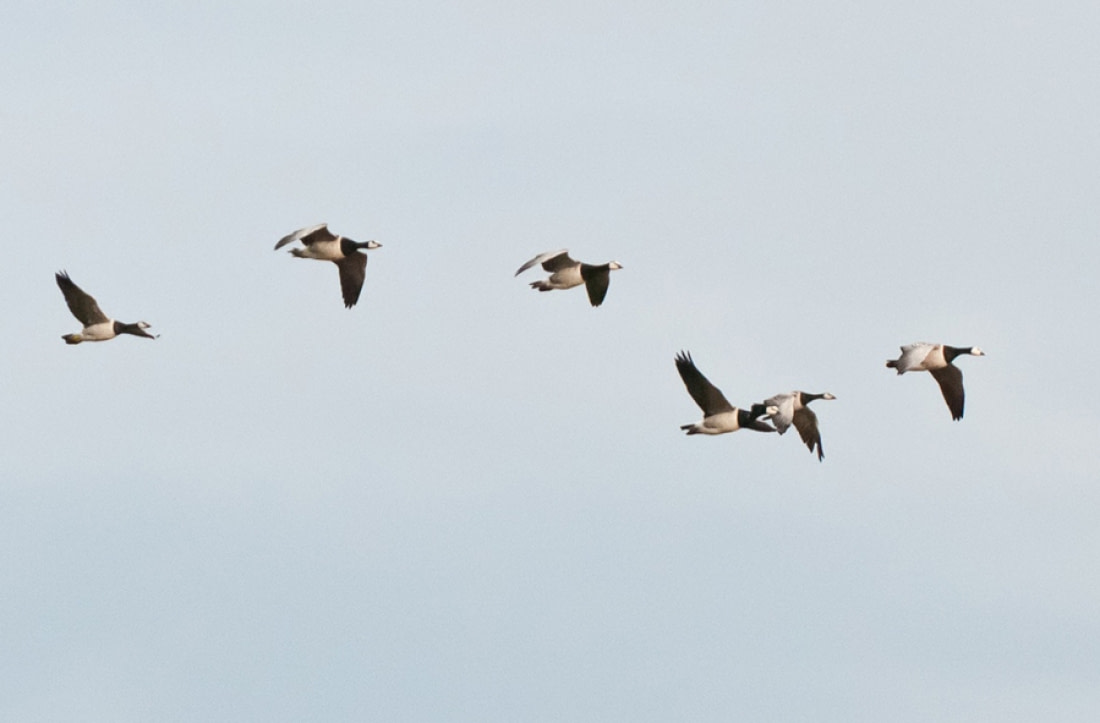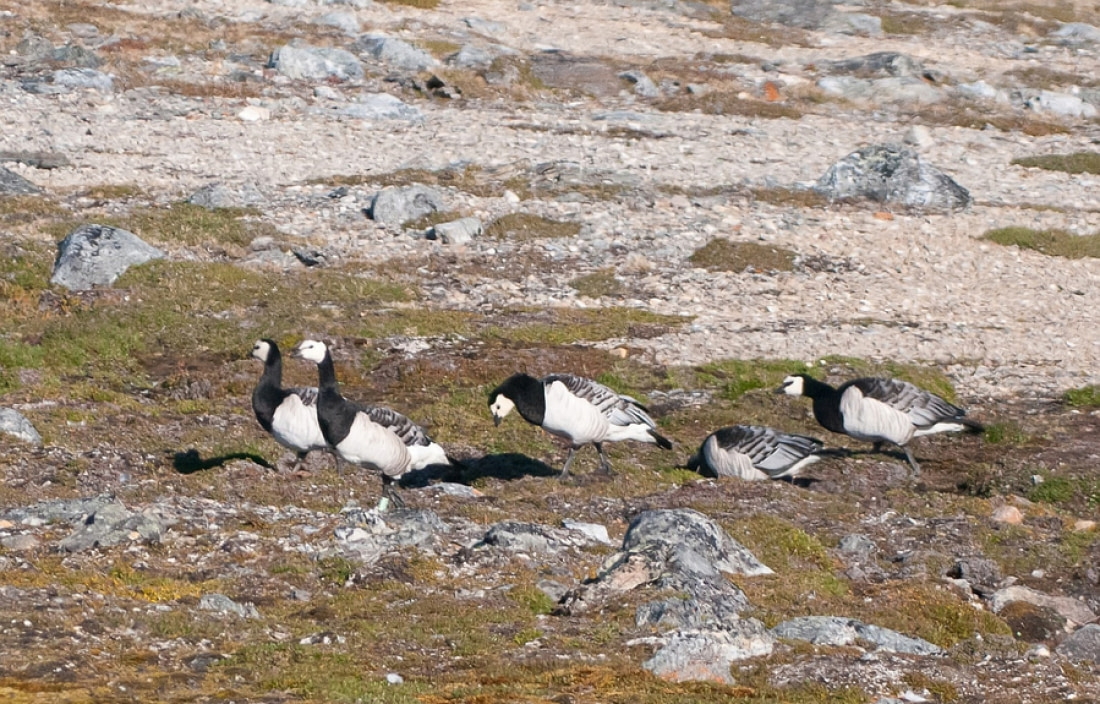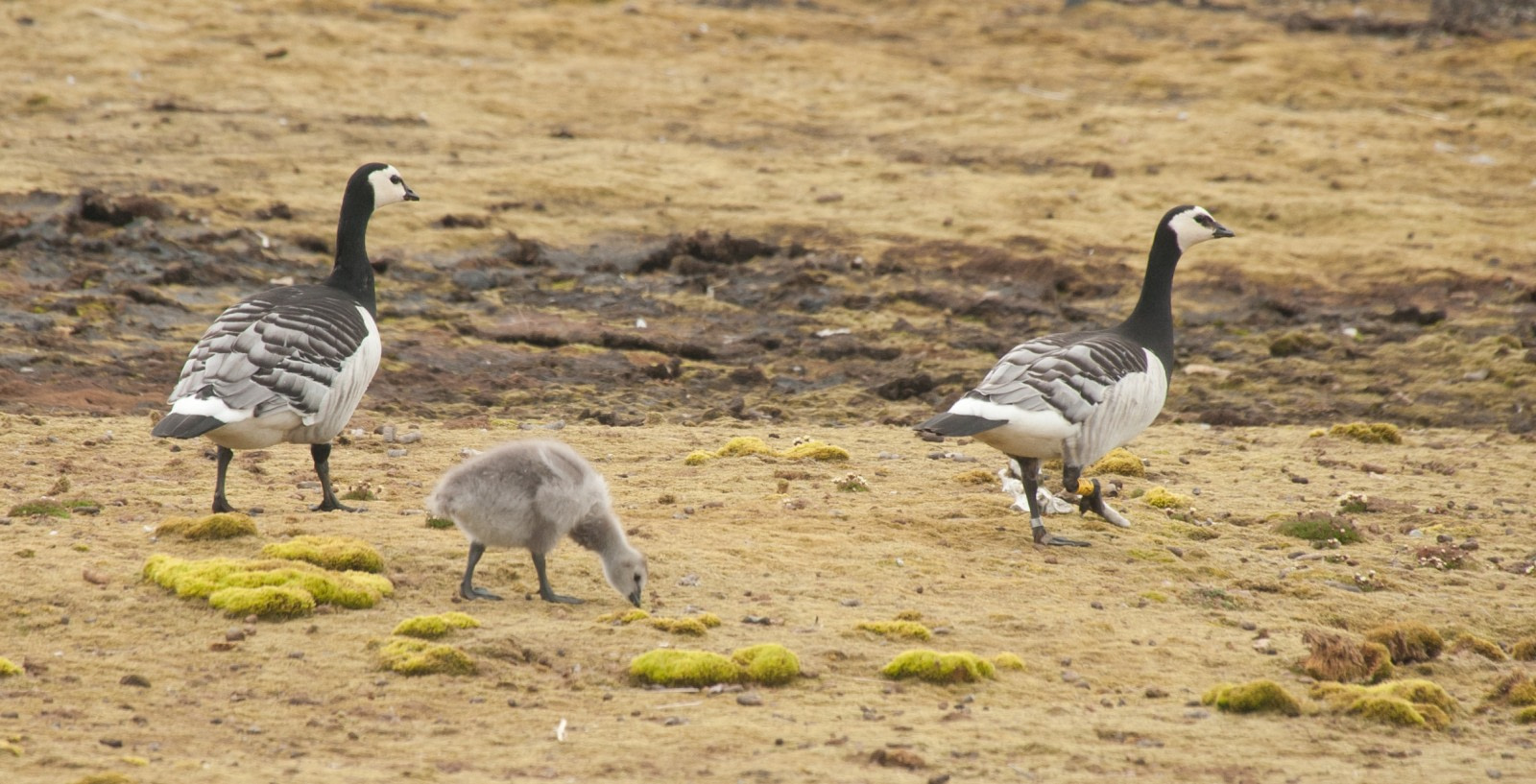Name: Barnacle Goose (Branta leucopsis)
Length: 55 to 70 cm.
Weight: 1 to 2.25kg.
Location: European North Atlantic islands, with occasional sightings along the northern North American east coast.
Conservation status: Least Concern.
Diet: Grass, sedge, roots, moss, herbs.
Appearance: Black neck, breast, cap, and bill, white face and belly, black and white plumage on the back.
Are Barnacle Geese social?
Barnacle Geese form dense colonies on cliffs and migrate in large flocks.
How fast do Barnacle Geese fly?
They typically fly at around 65 km per hour but can reach speeds of up to 95 km per hour.

What are Barnacle Geese breeding rituals like?
They reach sexual maturity at around 3 years. Nests are built high on cliffs to avoid predators but are far from food sources. The breeding season depends on snow melt timing. Females lay 4-5 eggs and incubate them for about 25 days, while males guard the nest. After hatching, goslings leap from the cliffs to reach the ground and find food. They fledge at about 6 weeks and stay with their parents through winter until spring migration.
How long do Barnacle Geese live?
Barnacle Geese can live up to 24 years.
How many Barnacle Geese are there today?
The global population is over 400,000.

Do Barnacle Geese have any natural predators?
Young goslings on the ground are vulnerable to Arctic Foxes.
7 Beautiful Barnacle Goose Facts
- The name leucopsis comes from the Greek words for "white" and "faced."
- "Barnacle" originally referred to this goose, later to the crustaceans.
- Medieval people believed Barnacle Geese were born from barnacles due to their absence in summer, not knowing they migrated north.
- Some also thought they were born from driftwood.
- Irish clerics used these myths to justify eating Barnacle Geese during fasting, until Pope Innocent III prohibited it in 1215.
- Three main flocks exist, each summering in different locations: Greenland, Svalbard, and Novaya Zemlya, wintering in the U.K., Germany, and the Netherlands.
- Primarily vegetarians, they also eat insects, shellfish, and molluscs in winter.





